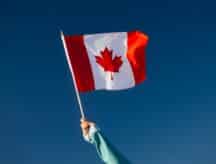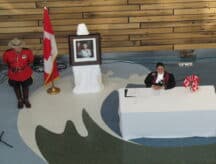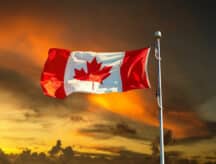How Canada’s electoral system works
On September 20, 2021, Canada will hold a federal election. Anyone who is a Canadian citizen and age 18 or over on election day can run or vote for the House of Commons.
This is one of the few privileges that citizens enjoy but that permanent residents (PRs) do not. However, PRs who cannot vote can still participate in other ways, such as volunteering with campaigns.
How do Canadians vote?
The vote is by secret ballot. Canadians can vote for one candidate in their riding, and the candidate who gets the most votes becomes the Member of Parliament (MP). They do not vote directly for the Prime Minister.
The make-up of Parliament will determine who wins the election. Almost always, the party with the most seats forms the government, and its leader becomes the Prime Minister.
Canada is divided into different electoral districts called "ridings." Each province or territory has at least one riding. The average riding has about 75,000 people who can vote, known as electors. The greater a province’s population, the more ridings it will have.
In the 2021 federal election, there are 338 ridings.
What is first-past-the-post?
Canada has a first-past-the-post voting system. In contrast to voting systems where voters rank candidates, Canadians only vote for one candidate per ballot. The candidate with the most votes wins.
This system can lead to some unusual results. For example, one party might get the most popular votes overall but end up with fewer seats than another. This happened in the 2019 Federal Election. The Conservatives got over 200,000 more votes than the Liberals. But, the Conservatives wound up with only 121 seats, while the Liberals obtained 157. This is because the Conservatives won many ridings by landslides, while the Liberals often won ridings with narrow margins.
First-past-the-post means also that a party can receive far less than 50% of the vote but still receive more than half of the seats. This happened in the 2015 Federal Election. That contest saw the Liberals receive 39.5% of the vote nationally but 54.4% of seats in Parliament.
It is the governor general’s job to assess which party leader can form a government and ask that person to do so. Almost always, this person will be the leader of the party that wins the most seats.
If one party wins more than half of all seats, they have a majority in Parliament. The result is that they can govern without support from any other party. If no single party wins a majority of the seats, then the government will be a minority government. In this case, the largest party will usually form a formal or informal coalition with one or more smaller parties. The parties will negotiate and make deals. For example, the larger party may agree to adopt some of the smaller party’s policies or include some members of the smaller party in the Cabinet. The smaller party will then support the larger party by either voting for it or abstaining, which means voting neither for nor against it.
Even a minority parliament usually produces a government. Voters and parties often do not want to go right back to another campaign, even if they are not happy with the recent results. Campaigns are draining for all involved — leaders, candidates, and voters.
How often do elections occur?
Federal law states that a parliament can hold an election at least every four years. There are also other ways they can occur.
The Prime Minister may ask the governor general to dissolve Parliament and call an election. This is what Justin Trudeau did earlier this month.
The Parliament may also decide that it has lost confidence in the government. In Canada, the vote on the annual federal budget is considered a vote of confidence. If the government loses a confidence vote, the Parliament is dissolved and an election occurs. The 2011 Federal Election resulted from the Conservative Government losing a confidence vote, though not one on a budget. Ironically, this contest resulted in the Conservatives being re-elected and forming a majority government.
Criticisms and praise of first-past-the-post
There are many opinions about Canada’s electoral system. Some people think it is unfair because it favours certain parties over others.
A party may get many votes in a riding, but will ‘waste’ any votes above those it needs to come first. This means a party can win a majority government despite having fewer votes.
Also, a party that is well-concentrated can gain more seats than it would if seats were awarded proportionally. For example, there is the Bloc Québécois, a party that advocates Quebec separating from Canada. As expected, the Bloc only runs candidates in Quebec. In the 2008 Election, the party won nearly 16% of the seats in Parliament despite less than 10% of Canadians voting for it. The opposite is obviously true, too. In 2019, the New Democratic Party (NDP) got almost 16% of the vote but less than 8% of the seats.
Others believe the current system is the best one available. It ensures a wide variety of voices are represented, and favours parties that have broad, national appeal forming the government. The riding system also leaves each Canadian citizen with a specific riding and MP through which to express themself.
In 2015, Justin Trudeau had vowed that if the Liberals won, they would then change the electoral system. Specifically, he promised that 2015 would be the last election fought under first-past-the-post. After he became prime minister, Trudeau set up a Parliamentary committee to look into alternatives to the current system. The committee heard from many ordinary Canadians as well as experts. Its final report recommended Canada hold a referendum on a new system that would be based on proportional representation. However, the Trudeau regime decided to abandon this proposal. Instead, it retained the first-past-the-post system.
© CIC News All Rights Reserved. Visit CanadaVisa.com to discover your Canadian immigration options.
- Do you need Canadian immigration assistance? Contact the Contact Cohen Immigration Law firm by completing our form
- Send us your feedback or your non-legal assistance questions by emailing us at media@canadavisa.com







